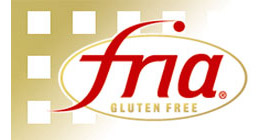|
|
|
The Combined IBS and Histamine-restricted Diet – Dr Janice Joneja |
|||||||||||||||||||||||||||||||||||||||||||||||||||||||||||||||||||||||||||||||||||||||||||||||||||||||||||||
|
Currently there are many different versions of dietary management strategies for IBS, and of histamine-restricted diets. Some are based on good evidence-based research; others are merely anecdotal and in some cases biased towards the interests of the proponents. The information provided here is derived only from authenticated, scientifically-based data. However, because of discrepancies in diverse versions, readers will inevitably find some differences in the dietary directives below and those they obtain from other sources. It is also important to realise that everyone is different. Some people will find that they cannot tolerate some of the foods on the “allowed” lists, while others will discover that they can in fact tolerate foods on the “restricted” list. The best idea is to follow the directives closely, and if symptoms disappear, start to reintroduce a few of the restricted foods slowly and cautiously, noting any adverse reactions. If some “allowed” foods seem to cause an adverse reaction, avoid those foods and monitor your response. Detailed instructions for reintroduction of each restricted food on the IBS diet is provided in my book: Joneja JM Vickerstaff. Digestion, Diet and Disease: Irritable Bowel Syndrome and Gastrointestinal Function. Please see details about the book below the food lists.
Notes on Interpretation of the TableIf a food causes and adverse reaction, but is designated as “allowed” in the chart, AVOID IT. This includes any established allergens and foods or ingredients that have repeatedly caused specific symptoms when they have been consumed in the past. If the directive indicates “All” or “Any”, this means that the designated food or beverage is allowed as long as it is free from any other restricted ingredients. Some people tolerate cooked garlic and cooked ginger, whereas others experience an adverse reaction. These should be consumed only if tolerated. Sucralose, cyclamate and saccharine are allowed as sweeteners when diabetes is a problem. Otherwise, choose natural sweeteners such as honey or fructose where indicated. FOODS ALLOWED
Using the Chart to Obtain Complete Balanced NutritionIn spite of the restriction, it is extremely important that all of the nutrients necessary for good health are included in the diet at all times. The simplest way to ensure this is to eat a balanced diet with ingredients from each of the macronutrient categories (protein, carbohydrate, and fat) at each meal. At achieve this, every meat should included at least one food from each food category:
To ensure the correct balance of micronutrients (vitamins and minerals), it is wise to take a daily multivitamin/mineral supplement while following any restricted diet. Although each of the diets discussed above will have its own requirements, one supplement that will be suitable for all diets is probably easiest. Such a supplement should include both vitamins and minerals and fulfill the following requirements:
Suggested Meal Plans for the Combined Diet
NOTE: Some authorities recommend avoidance of scombroid fish because of the occasional risk of histamine toxicity by bacteria, such as Morganella morganii in the fish gut. The bacteria produce the enzyme histidine decarboxylase, which acts on histidine in the flesh of the fish, converting it into histamine. However, there are only occasional outbreaks of “Scombroid fish poisoning” in wild fish, because conditions need to be right in order for the bacteria to multiply. So in most cases the fish are safe to eat. Nevertheless, some people prefer to err on the side of caution and avoid the species most at risk for histamine development. Scombroid fish species include:
Non-scombroid species that may also be responsible for “Scombroid fish toxicity”:
Source of Data: Dr. Janice Joneja. Histamine Intolerance: A Comprehensive Guide for Healthcare Professionals. 2017 Berrydales Publishing The Amazon links are Dr. Janice Joneja. The Beginner’s guide to Histamine Intolerance. 2017 Berrydales Publishing [Please insert URLs for ebook and paperback] Joneja JM Vickerstaff. Digestion, Diet and Disease: Irritable Bowel Syndrome and Gastrointestinal Function. Rutgers University Press, Piscataway, New Jersey. August 2004 ISBN 0-8135-3387-2
|
If you found this article interesting, you will find many more general articles and research reports on coeliac disease here, and lots of information on the management of coeliac disease here.
You can also find articles and research reports on gluten intolerance here and articles on a wide range of other digestive conditions here.
For hundreds of gluten free foods see our freefrom food section here, and for nearly 800 gluten-free recipes see here.
And if you would like to get our FREE fortnightly e-newsletter with new products, recipes, articles and all the latest news from the allergy and freefrom world, just sign up here.








